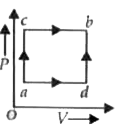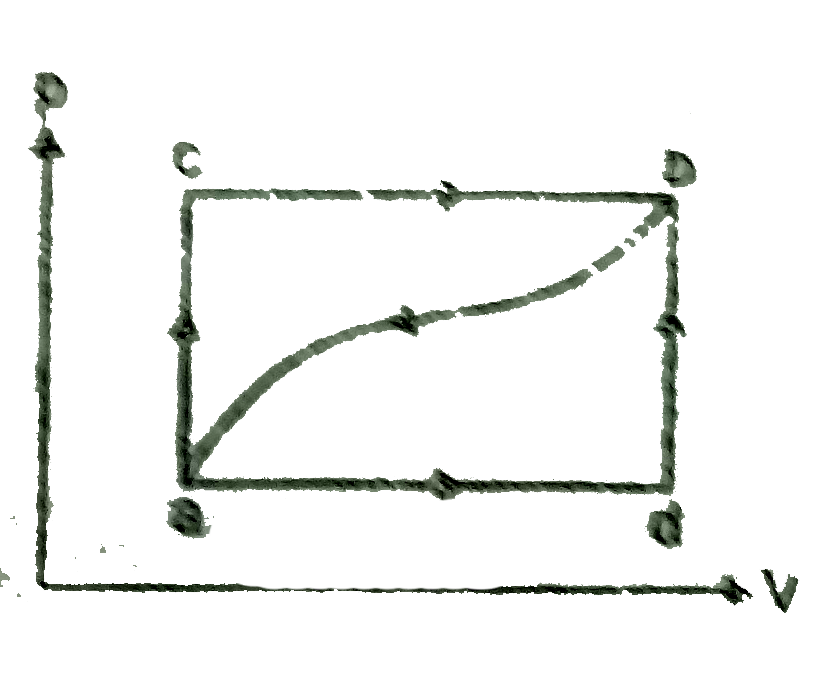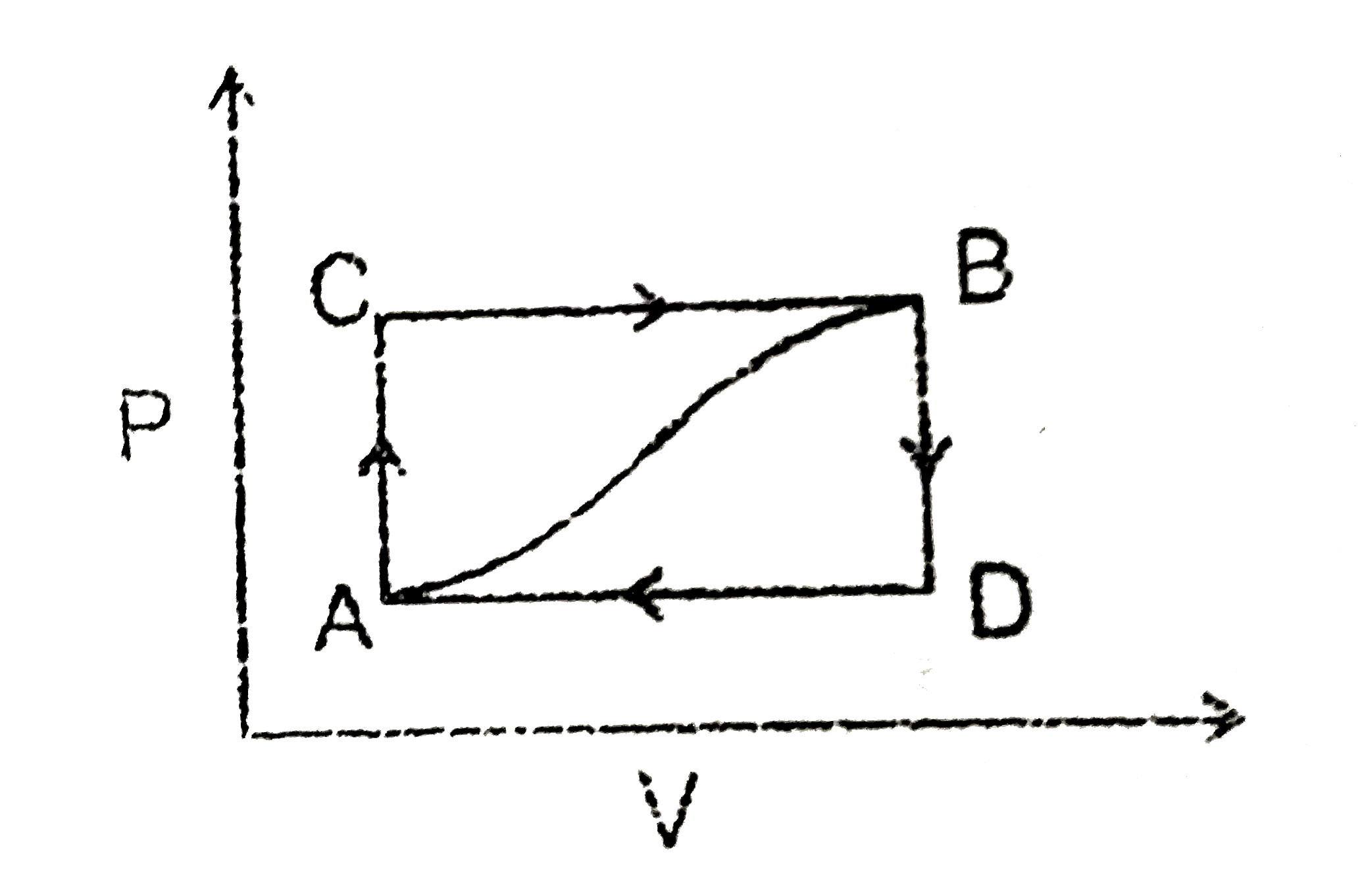When a thermodynamic system is taken from an initial state I to a final state F along the path IAF, as shown in Fig. the heat energy absorbed by the system is Q=55J and work done by the system is W=25J. If the same system is taken along the path IBF, the value of Q=35J.
(a) If W=−15J for the curved path FI, how much heat energy is lost by the system along this path ?
(b) If U1=10J, what is UF ?
(d) If UB=20J, what is Q for the process BF and IB ?
The first law of thermodynamics states that
ΔQ=ΔU+ΔW or Q=(UF−UI)+W
Here UI and UF are the internal energies in the initial and the final state, respectively. Given that for path IAF,Q=55J and W=25J. Therefore,
ΔU=UF−UI=Q−W=55−25=30J
The internal energy is independent of the path, it depends only on the initial and final states of the system. Thus, the internal energy between I and F states is 30 J irrespective of the path followed by the system.
a. For path IBF, Q=35J and ΔU=30J. Therefore, W=Q−ΔU=35−30=5J
b. W=−15J, but ΔU=−30J. Therefore, Q=W+ΔU=−15−30=−45J.
Given UI=10J. Therefore, UF=ΔU+UI=30+10=40J.
d. The process BF is isochoric, i.e., the volume is constant. Hence,
W = 0. Therefore, Q=(ΔU)BF=UF−UB=40−20=20J.
The process IB is isobaric (constant pressure). Therefore.
Q=(Q)IBF−(Q)BF=35−20=15J.
Topper's Solved these Questions
- BOOK - CENGAGE PHYSICSCHAPTER - KINETIC THEORY OF GASES AND FIRST LAW OF THERMODYNAMICSEXERCISE - Solved Examples14videos
KINETIC THEORY OF GASES AND FIRST LAW OF THERMODYNAMICS
- BOOK - CENGAGE PHYSICSCHAPTER - KINETIC THEORY OF GASES AND FIRST LAW OF THERMODYNAMICSEXERCISE - Exercise 2.120videos
KINETIC THEORY OF GASES AND FIRST LAW OF THERMODYNAMICS
- BOOK - CENGAGE PHYSICSCHAPTER - KINETIC THEORY OF GASESEXERCISE - Compression2videos
KINETIC THEORY OF GASES
- BOOK - CENGAGE PHYSICSCHAPTER - LINEAR AND ANGULAR SIMPLE HARMONIC MOTIONEXERCISE - Multiple Correct Answer Type9videos
LINEAR AND ANGULAR SIMPLE HARMONIC MOTION
Similar Questions
Knowledge Check
- Question 1 - Select One
For a gaseous state if heat supplied to the system is 100 J and work done by the system is 25 J. then internal energy of the system is
A125 JB100 JC50 JD75 J - Question 2 - Select One
Find the change in internal energy if heat supplied to the gaseous system is 100 J and work done by the system is 80 J.
A5 JB30 JC10 JD20 J - Question 3 - Select One
When a system is taken from stata a to state b along the path acb as shown in figure, 60 J of heat flows into the system and 30 J of work is done by the system. Along the path adb, if the work done by the system is 10 J, heat flow into the system is
 A100 JB20 JC80 JD40 J
A100 JB20 JC80 JD40 J
A system is taken from state A to state B along two different paths 1 and 2 . The heat absorbed and work done by the system along these two paths are Q1 and W1 and W2 respectively.
View SolutionIf the amount of heat given to a system is 50 J and work done on the system is 15 J, then change in internal energy of the system will be
View SolutionWhen a system is taken from state 'a' to state 'b' along the path 'acd', is is found that a quantity of heat Q=200J is absorbed by the system and a work W=80J is done by it. Along the path 'adb', Q=144J. The work done along the path 'adb' is
 View Solution
View SolutionA system is taken from a given initial state to a given final state along various paths represented on a P-V diagram. The quantity that is independent of the path is
View SolutionWhen a system is taken from state A to state B along path ACB as shown in figure below, 80J of heat flows into the system and the system does 30J of work.

How much heat flows into the system along path ADB if the work done by the system is 10J:View Solution

